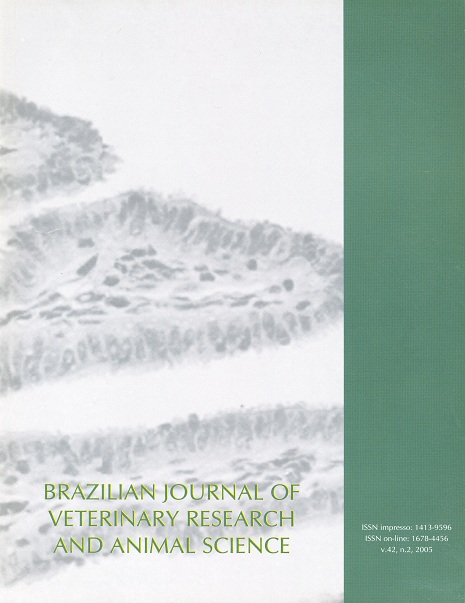Study of muscle digastric descriptive and topographical anatomy in primates (Cebus apella, Linnaeus, 1766)
DOI:
https://doi.org/10.11606/issn.1678-4456.bjvras.2005.26441Keywords:
Digastric muscle, Cebus apella, Rostral belly, Caudal bellyAbstract
In this study we used 18 heads of monkey Cebus apella supplied by the Surgery Department of the School of Veterinary Medicine and Animal Science of the University of São Paulo. These heads were originally from the city of São Paulo Zoo of monkeys, who died naturally. The method included technique of light mesoscopy (40 magnifications), and the technical routine as follows: cannulation of the aorta toward the cranium; perfusion with water at 40 ºC; injection of the arterial system with stained latex solution (Neoprene 450 and Sulvinil stain), fixation and conservation in 10% formol aqueous solution. Thirty-six antimeres were dissected. The digastric muscle, composed of two bellies (rostral and caudal) joined by an intermediate tendon, was inserted in the paramedian line of the mandible, from the incisive ventral border to the molar ventral border (rostral belly). The mode of origin, course and direction of the fibers showed three arrangements: one with plane bellies and fusiform tendon (55.5%); one with plane belly, fibers inserted caudolaterally in the ventral mandibular border and fusiform tendon (38.9%); and one with fusiform belly and tendon. The caudal belly was related to the belly and tendon of the stylo-hyoid muscle, crossing it ventrally (22.2%) or dorsally (2.7%); crossing the intermediate tendon ventrally (35.9%) or dorsally (33.2%). The digastric muscle (rostral belly) is plane in Cebus apella (94.4%), has a wide bone insertion, in the ventral mandibular border and the intermediate tendon rests on the cervical fascia, in lateral expansion until it reaches the bone, thus making up a double supporting point (38.9%).Downloads
Download data is not yet available.
Downloads
Published
2005-04-01
Issue
Section
UNDEFINIED
License
The journal content is authorized under the Creative Commons BY-NC-SA license (summary of the license: https://
How to Cite
1.
Ferreira JR, Pinto Júnior N, Kajita D, Cirqueira DS de, Nogueira DJ. Study of muscle digastric descriptive and topographical anatomy in primates (Cebus apella, Linnaeus, 1766). Braz. J. Vet. Res. Anim. Sci. [Internet]. 2005 Apr. 1 [cited 2024 Jul. 26];42(2):113-21. Available from: https://www.revistas.usp.br/bjvras/article/view/26441





